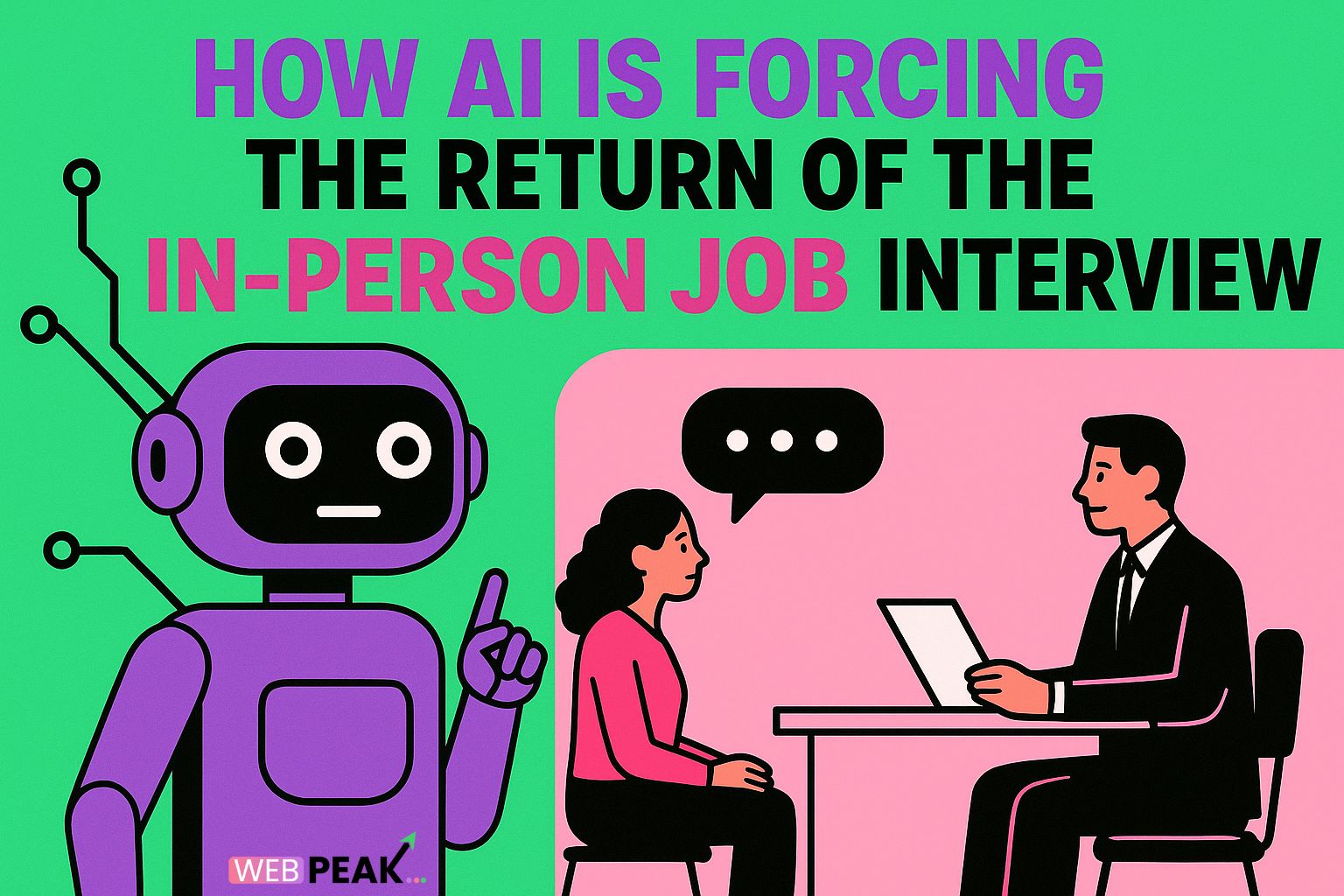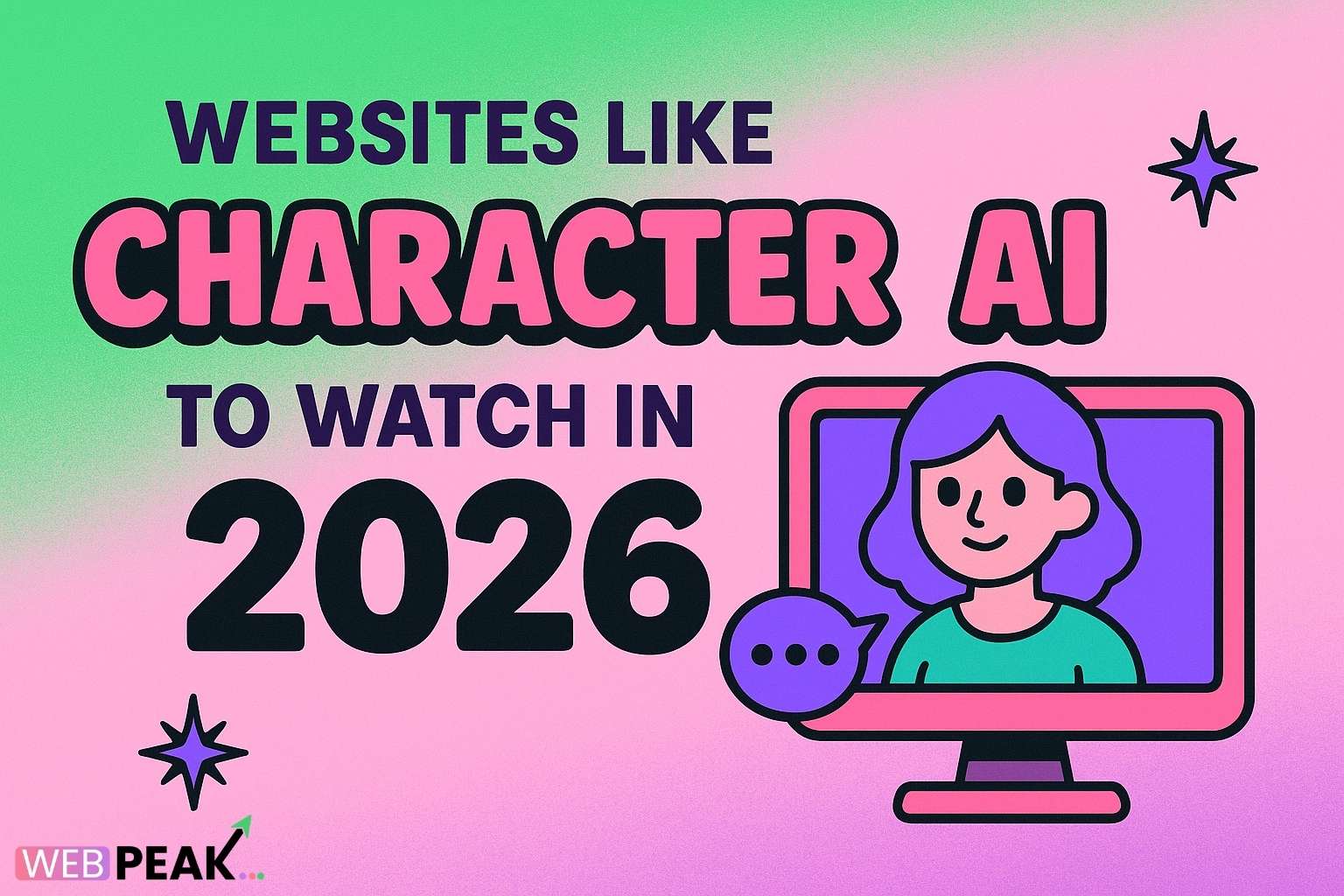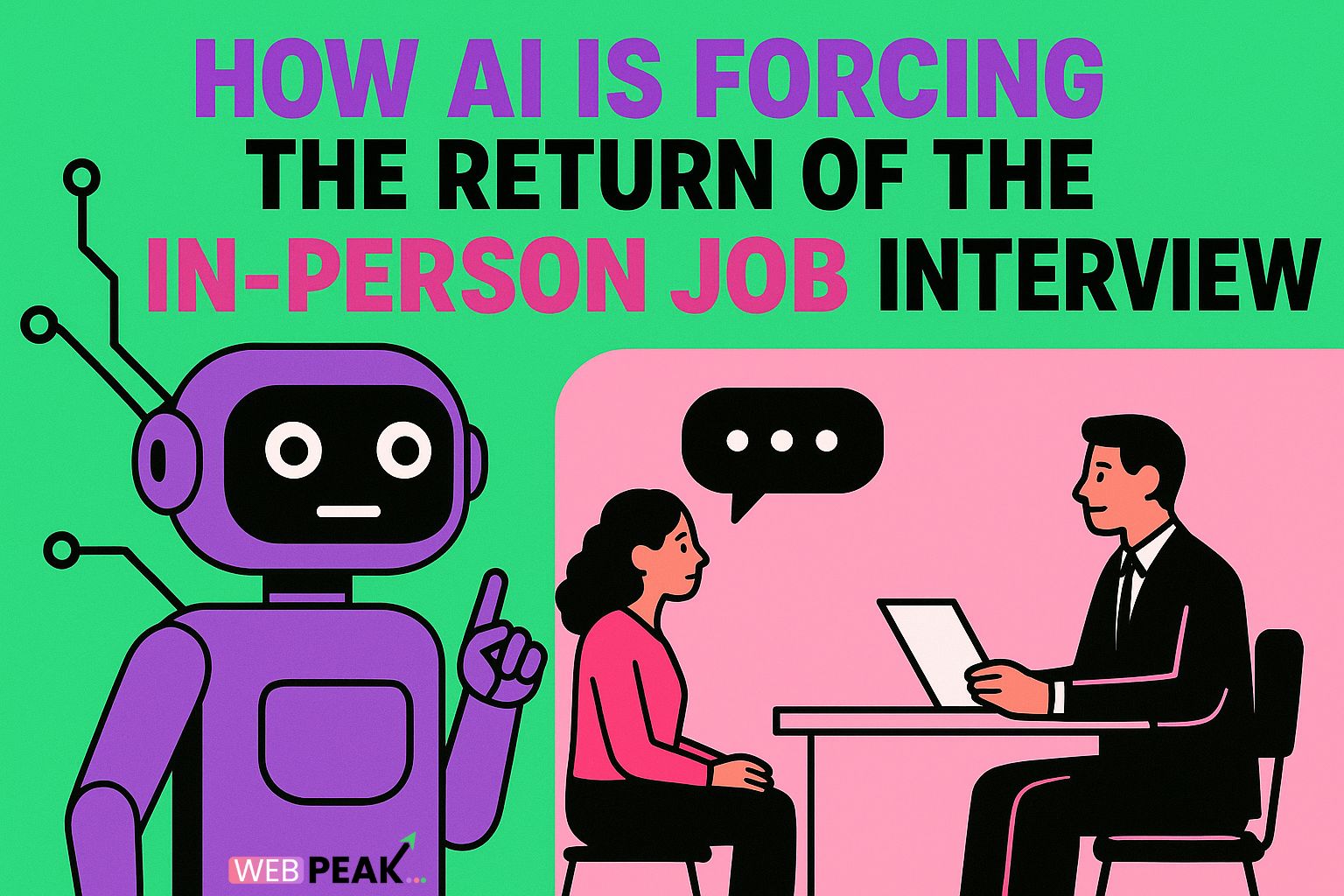How AI Is Forcing the Return of the In-Person Job Interview
Artificial intelligence is changing recruitment faster than any technology before it—and one of the most surprising outcomes is a renewed emphasis on face-to-face hiring. As businesses automate candidate screening, résumé analysis, and skills assessments, many employers are discovering the limits of digital hiring. This shift explains how AI is forcing the return of the in-person job interview, creating what some experts call a “human comeback” in the hiring process. Below, we explore why AI-driven recruiting is pushing companies back toward traditional interviews, what this means for job seekers, and how organizations can adapt to this evolving landscape.
The Unexpected Trend: Why In-Person Interviews Are Surging Again
For years, remote interviews—video calls, pre-recorded responses, and AI-driven assessments—seemed to be the future. However, as AI tools become more capable of generating résumés, cover letters, and interview responses, employers are reevaluating how they measure genuine human qualities.
More recruiters report difficulty distinguishing between AI-assisted and authentic candidate submissions, especially when high-quality generative AI tools make it easy to create polished applications. To verify personality, communication skills, and cultural fit, companies are reviving in-person interviews as a more reliable method of evaluation.
Key Drivers Behind the Shift Back to In-Person Interviews
- AI-generated applications are harder to evaluate: Recruiters increasingly suspect that applicants use AI to write résumés, cover letters, and sample work.
- Concerns about authenticity: In-person interactions reveal non-verbal cues, spontaneity, and emotional intelligence—qualities impossible to automate.
- Better quality control: Companies want to ensure the person they hire is genuinely capable, not just capable of using AI tools creatively.
- High-stakes hiring: For leadership, technical, or client-facing roles, in-person evaluations reduce uncertainty and risk.
- Stronger team alignment: Onsite interviews allow existing team members to assess fit more accurately.
How AI Is Disrupting Traditional Hiring Workflows
From automated screening to AI scoring of interview answers, nearly every part of recruitment has been augmented by machine learning. While AI has made hiring faster, it has also introduced new challenges—especially as job seekers increasingly rely on the same tools employers use.
AI-Enhanced Resumes and Cover Letters
Generative AI tools can create professional-level documents within minutes. While this benefits applicants, it reduces the effectiveness of written materials as a filter for skill and experience. Recruiters report that many résumés now “read the same,” as AI optimizes language, keywords, and structure.
AI-Driven Assessment Tools
Software that analyzes candidate responses, sentiment, tone, and phrasing has become popular. However, job seekers now use AI to practice or even generate answers that match what the algorithm wants. This creates a feedback loop where neither side is reliably measuring authenticity.
AI-Assisted Interview Coaching
AI-based mock-interview platforms help applicants refine answers, correct body language, and eliminate verbal tics. While helpful, it also means a growing number of candidates deliver rehearsed, AI-coached responses rather than natural communication.
The Human Element: What In-Person Interviews Reveal That AI Can’t
Despite the efficiency of digital tools, employers recognize that certain qualities simply cannot be processed by an algorithm. In-person interviews allow a fuller evaluation of the candidate.
Soft Skills and Emotional Intelligence
Leadership, collaboration, empathy, and adaptability are difficult to measure digitally. In-person conversations reveal real-time reactions, flexibility, and interpersonal awareness.
Authenticity and Spontaneity
Face-to-face interviews make it harder for candidates to rely on AI assistance or pre-scripted responses. Recruiters can gauge genuine knowledge and ability to think on their feet.
Company Culture Fit
Meeting team members, observing office dynamics, and experiencing the physical work environment help both sides decide whether the role is a good match.
Body Language and Professional Presence
Non-verbal communication conveys confidence, professionalism, and communication style—elements impossible to judge reliably through automated tools.
Why Employers Are Increasing Onsite Assessments
As concerns grow over AI misuse in hiring, some organizations are incorporating more in-person checkpoints to validate skills and character.
Real-Time Skills Evaluation
Whether through whiteboard coding, group problem-solving, or collaborative exercises, employers use in-person assessments to ensure candidates can actually perform the tasks their AI-boosted applications claim.
Team Collaboration Sessions
Hiring teams may involve multiple employees in onsite interviews to better understand how a candidate interacts with colleagues and responds to varied communication styles.
Work Simulations
Many companies conduct real-world simulations: presenting, writing live content, analyzing data, or brainstorming strategies on the spot. These activities help distinguish genuine expertise from AI-assisted proficiency.
The Impact on Job Seekers: What Candidates Need to Know
A return to in-person interviews creates new expectations for candidates—many of whom have grown accustomed to virtual hiring.
Preparation Now Requires More Than AI Tools
While AI can assist in creating preparation materials, it cannot replace the confidence and adaptability needed in face-to-face conversations.
Body Language and Presentation Matter Again
Candidates must refine traditional communication skills: eye contact, posture, tone, dressing professionally, and building rapport.
Travel and Time Considerations
In-person interviews require planning, scheduling flexibility, and often travel—factors that were minimized in virtual hiring.
Honesty and Authenticity Are More Important
With AI-generated answers becoming common, employers value sincerity and the ability to articulate personal stories, experiences, and insights.
The Employer Perspective: Balancing AI Efficiency With Human Insight
Organizations must find the right balance between AI-driven recruitment and traditional interpersonal evaluation. AI is not going away—but its presence requires more thoughtful integration.
AI as a Support System, Not a Replacement
Companies increasingly use AI for early-stage tasks—screening, scheduling, keyword matching—while reserving final decisions for in-person judgment.
Reducing Bias Through Hybrid Hiring
While AI tools can sometimes amplify bias, combining digital screening with multiple human interviewers helps counterbalance unfair evaluations.
Improved Workforce Quality
The return of in-person interviews is already producing better hiring outcomes, particularly in roles where communication, leadership, and creativity matter most.
SEO Checklist for Recruiters and HR Teams
As companies and content creators discuss this shift in hiring, optimizing recruitment-related content for search engines is essential. Below is a practical SEO checklist you can apply to hiring pages, blog posts, or recruitment content.
- Use long-tail keywords: such as “AI in hiring,” “in-person job interview trends,” and “AI screening challenges.”
- Optimize for conversational queries: many job seekers now search using full questions.
- Create content around hiring insights: such as interview tips, AI screening prep, and recruiting best practices.
- Add structured data: for job postings, FAQs, and articles.
- Include expert quotes and data: to improve E-E-A-T factors (Experience, Expertise, Authoritativeness, Trustworthiness).
- Use internal linking: connect articles on hiring, HR automation, and recruitment trends.
- Optimize meta descriptions: keep under 160 characters and include the primary keyword.
- Add a clear CTA: invite readers to explore services or schedule a consultation.
For businesses needing professional support with SEO, digital branding, and content strategies, working with a company like WEBPEAK—a full-service digital marketing agency offering Web Development, Digital Marketing, and SEO—can help you position your recruitment content for maximum visibility.
Frequently Asked Questions (FAQ)
Why is AI causing a return to in-person interviews?
Because AI-generated applications are becoming so polished, employers need in-person interactions to accurately assess authenticity, communication skills, and personality.
Are virtual interviews becoming obsolete?
No. Virtual interviews remain important in early screening stages. However, more companies now prefer to make final decisions through face-to-face conversations.
How can candidates prepare for in-person interviews in an AI-dominated hiring landscape?
Candidates should practice genuine communication, refine body language, anticipate spontaneous questions, and prepare thoughtful examples that demonstrate real experience—not AI-generated answers.
Will AI still play a major role in recruitment?
Yes. AI will continue to automate initial screening and administrative tasks, but human interviews are recovering importance for final hiring decisions.
Which industries are most likely to return to in-person interviews?
Tech, finance, healthcare, creative fields, leadership roles, and any industry where communication or collaboration is essential tend to favor in-person assessments.
Final Thoughts: The Future of Hiring Is Hybrid
Artificial intelligence has transformed recruitment—but not in the way many expected. Instead of eliminating traditional hiring methods, AI is highlighting their irreplaceable strengths. As more companies recognize the value of genuine human interaction, the in-person interview is returning as a trusted tool for assessing true skill, personality, and potential. The future of hiring will be neither fully digital nor fully traditional—it will be a hybrid system that blends AI efficiency with human judgment.





